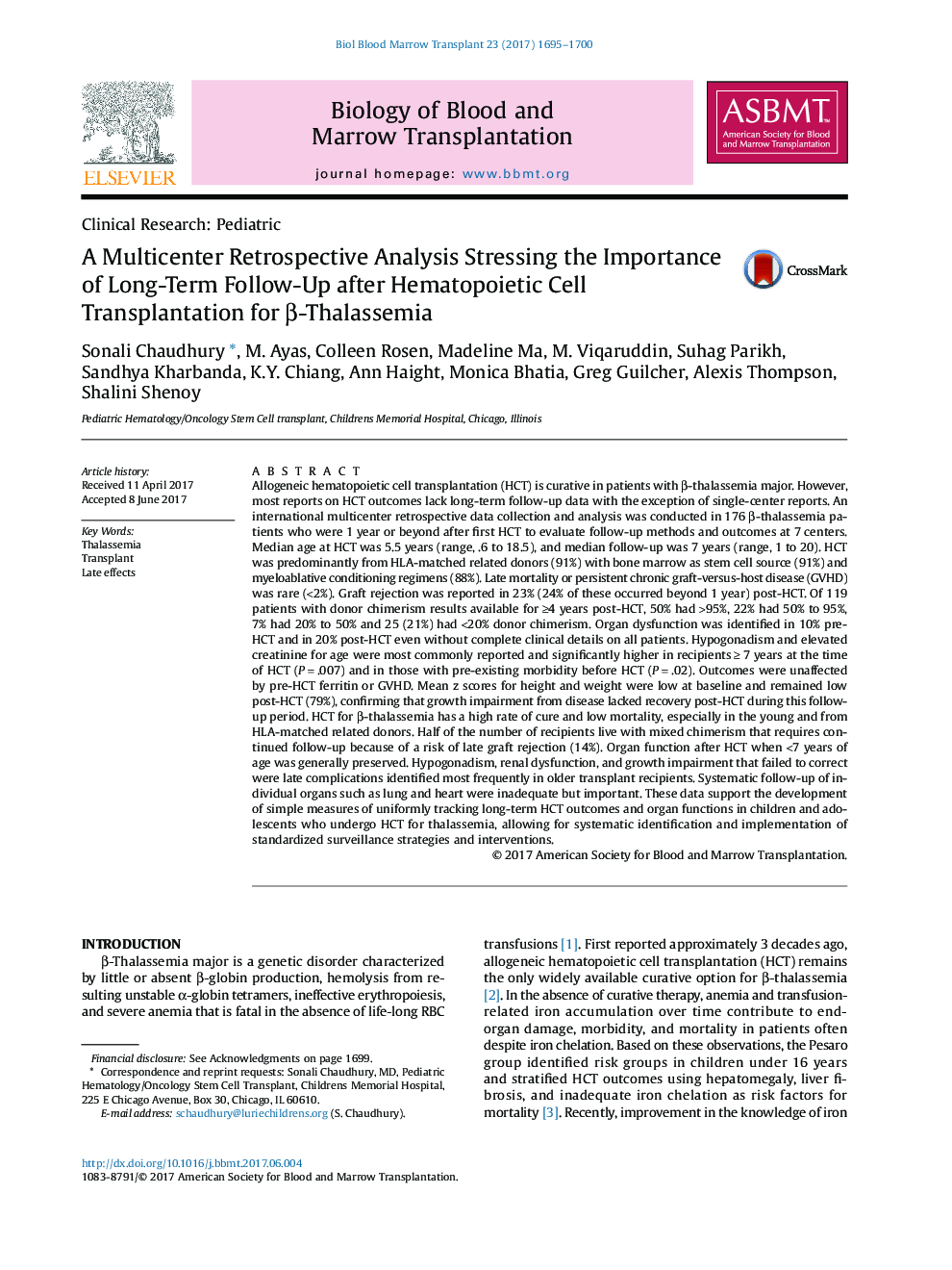| Article ID | Journal | Published Year | Pages | File Type |
|---|---|---|---|---|
| 5524055 | Biology of Blood and Marrow Transplantation | 2017 | 6 Pages |
â¢Transplantation for β-thalassemia has a high cure rate and low mortality.â¢Mixed chimerism is common and needs uniform follow-up.â¢Organ toxicity and growth impairment is higher in transplants ⥠7 years of age.â¢Need for simple measures to uniformly track long-term outcomes and organ functions.
Allogeneic hematopoietic cell transplantation (HCT) is curative in patients with β-thalassemia major. However, most reports on HCT outcomes lack long-term follow-up data with the exception of single-center reports. An international multicenter retrospective data collection and analysis was conducted in 176 β-thalassemia patients who were 1 year or beyond after first HCT to evaluate follow-up methods and outcomes at 7 centers. Median age at HCT was 5.5 years (range, .6 to 18.5), and median follow-up was 7 years (range, 1 to 20). HCT was predominantly from HLA-matched related donors (91%) with bone marrow as stem cell source (91%) and myeloablative conditioning regimens (88%). Late mortality or persistent chronic graft-versus-host disease (GVHD) was rare (<2%). Graft rejection was reported in 23% (24% of these occurred beyond 1 year) post-HCT. Of 119 patients with donor chimerism results available for â¥4 years post-HCT, 50% had >95%, 22% had 50% to 95%, 7% had 20% to 50% and 25 (21%) had <20% donor chimerism. Organ dysfunction was identified in 10% pre-HCT and in 20% post-HCT even without complete clinical details on all patients. Hypogonadism and elevated creatinine for age were most commonly reported and significantly higher in recipientsââ¥â7 years at the time of HCT (Pâ=â.007) and in those with pre-existing morbidity before HCT (Pâ=â.02). Outcomes were unaffected by pre-HCT ferritin or GVHD. Mean z scores for height and weight were low at baseline and remained low post-HCT (79%), confirming that growth impairment from disease lacked recovery post-HCT during this follow-up period. HCT for β-thalassemia has a high rate of cure and low mortality, especially in the young and from HLA-matched related donors. Half of the number of recipients live with mixed chimerism that requires continued follow-up because of a risk of late graft rejection (14%). Organ function after HCT when <7 years of age was generally preserved. Hypogonadism, renal dysfunction, and growth impairment that failed to correct were late complications identified most frequently in older transplant recipients. Systematic follow-up of individual organs such as lung and heart were inadequate but important. These data support the development of simple measures of uniformly tracking long-term HCT outcomes and organ functions in children and adolescents who undergo HCT for thalassemia, allowing for systematic identification and implementation of standardized surveillance strategies and interventions.
